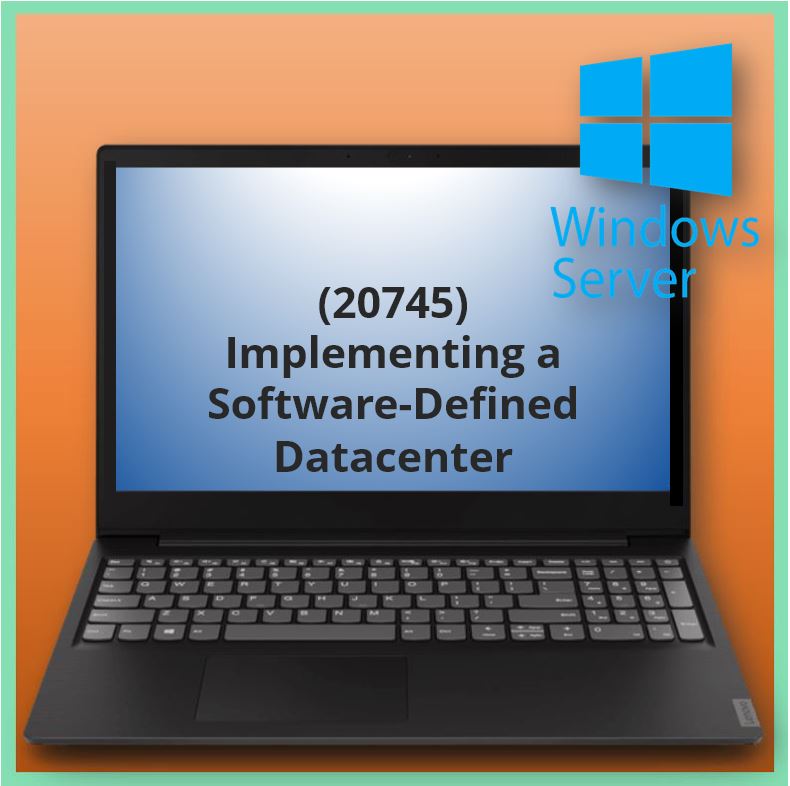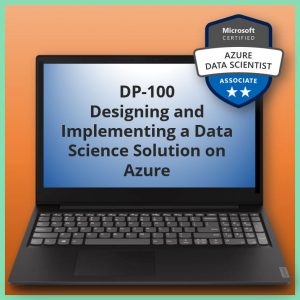Aangeboden leervormen
Implementing a Software-Defined Datacenter (20745)
Course Description
This course explains how to implement and manage virtualization infrastructure in a software-defined datacenter by using System Center 2016 Virtual Machine Manager. The course also describes how to monitor the infrastructure by using System Center Operations Manager and protect it by using Data Protection Manager.
The main focus of this course is on managing Hyper-V virtualization infrastructure in Windows Server 2016, although the course also covers other virtualization platforms that can be managed by using Virtual Machine Manager 2016.
At Course Completion
After completing this course, students will be able to:
• Explain the different virtualization options.
• Install and manage Hyper-V on Windows Server 2016.
• Install and configure System Center 2016 Virtual Machine Manager.
• Manage storage fabric and fabric updates.
• Configure and manage Virtual Machine Manager library and library objects.
• Manage the networking fabric.
• Create and manage virtual machines by using Virtual Machine Manager.
• Manage clouds in Virtual Machine Manager.
• Manage services in Virtual Machine Manager.
• Monitor virtualization infrastructure by using System Center Operations Manager.
• Implement and manage Hyper-V Replica and Azure Site Recovery.
• Protect virtualization infrastructure by using Data Protection Manager.
Voor wie
This course is intended for IT professionals and administrators who are responsible for designing, implementing, and managing virtualization infrastructure in a software-defined datacenter by using System Center 2016 Virtual Machine Manager.
This course is also intended for IT decision makers who want to determine which virtualization product to implement in their software-defined datacenters and who want to become familiar with the System Center 2016 solution for managing virtualization infrastructure.
Programma
Module 1: Introduction to server virtualization
This module explains the different virtualization solutions. It also describes the concepts of software-defined datacenter and Microsoft Azure.
Lessons
• Overview of Microsoft Virtualization
• Introduction to the Software-Defined Datacenter
• Extending virtualization to the cloud
Lab : Evaluating the virtualization options
• Selecting the appropriate virtualization method
• Activating Azure subscription and managing Azure
After completing this module, students will be able to:
• Describe the virtualization options available in Microsoft.
• Describe the concept of a Software-Defined Datacenter.
• Describe how to extend a datacenter to the cloud.
Module 2: Overview of Hyper-V virtualization
This module explains how to install and manage Hyper-V in Windows Server 2016.
Lessons
• Installing and configuring the Hyper-V role
• Creating and managing virtual hard disks and virtual machines
• Creating and using Hyper-V virtual switches
• Implementing failover clustering with Hyper-V
Lab : Installing Hyper-V and working with Hyper-V virtualization
• Installing and configuring the Hyper-V server role
• Creating a Nano Server virtual machine
• Configuring virtual machines and virtual hard disks
Lab : Implementing failover clustering with Hyper-V
• Creating a Hyper-V failover cluster
• Managing a Hyper-V failover cluster
After completing this module, students will be able to:
• Install and configure the Hyper-V role.
• Create and manage virtual hard disks and virtual machines.
• Create and use Hyper-V virtual switches.
• Implement failover clustering.
Module 3: Installing and configuring System Center 2016 Virtual Machine Manager
This module explains how to install and configure System Center 2016 Virtual Machine Manager for managing a virtualization environment.
Lessons
• Overview of System Center 2016 Virtual Machine Manager
• Installing System Center 2016 Virtual Machine Manager
• Adding hosts and managing host groups
Lab : Installing and configuring System Center 2016 Virtual Machine Manager
• Installing and configuring System Center 2016 Virtual Machine Manager
• Managing hosts and host groups
• Managing Azure subscription by using Virtual Machine Manager
After completing this module, students will be able to:
• Describe the main features in System Center 2016 Virtual Machine Manager.
• Install System Center 2016 Virtual Machine Manager.
• Add virtualization hosts and manage host groups.
Module 4: Managing storage fabric and fabric updates
This module explains how to manage storage fabric and fabric updates in Virtual Machine Manager.
Lessons
• Overview of server virtualization storage technologies
• Managing storage fabric
• Managing fabric updates
Lab : Managing storage fabric and fabric updates
• Implementing a storage infrastructure
• Create a File Server cluster and a storage QoS policy
• Managing fabric updates
After completing this module, students will be able to:
• Describe storage technologies used with server virtualization.
• Manage a storage fabric in Virtual Machine Manager.
• Manage fabric updates in Virtual Machine Manager.
Module 5: Configuring and managing Virtual Machine Manager library and library objects
This module describes how to configure and manage Virtual Machine Manager library and library objects. It also describes the differences between profiles and templates and how they are used.
Lessons
• Overview of the Virtual Machine Manager library
• Preparing Windows for deployment in Virtual Machine Manager
• Working with profiles
• Working with VM templates
Lab : Configuring and managing Virtual Machine Manager library and library objects
• Configuring and managing the Virtual Machine Manager library
• Creating Windows image for the Virtual Machine Manager library
• Creating and managing profiles and templates
After completing this module, students will be able to:
• Describe how to use the Virtual Machine Manager library.
• Prepare Windows for deployment in Virtual Machine Manager.
• Work with profiles in Virtual Machine Manager.
• Create and work with VM templates in Virtual Machine Manage.
Module 6: Managing the networking fabric
This module explains how to manage networking fabric in Virtual Machine Manager.
Lessons
• Networking concepts in Virtual Machine Manager
• Managing software-defined networking
• Configuring network virtualization
Lab : Managing the networking fabric
• Configuring networking fabric
• Implementing and testing network virtualization
• Deploying network controller
After completing this module, students will be able to:
• Describe Virtual Machine Manager networking concepts.
• Configure software-defined networking in Virtual Machine Manager.
• Configure network isolation in Virtual Machine Manager.
Module 7: Creating and managing virtual machines by using Virtual Machine Manager
This module explains how to create and manage virtual machines by using Virtual Machine Manager.
Lessons
• Virtual machine management tasks
• Creating, cloning, and converting virtual machines
Lab : Creating and managing virtual machines by using System Center 2016 Virtual Machine Manager
• Creating a virtual machine and modifying its properties
• Creating and managing checkpoints
• Cloning and migrating a virtual machine
After completing this module, students will be able to:
• Manage virtual machines in Virtual Machine Manager.
• Create virtual machines by using different options.
Module 8: Managing clouds in Virtual Machine Manager
This module explains how to create and manage clouds by using Virtual Machine Manager.
Lessons
• Introduction to clouds
• Creating and managing a cloud
• Creating user roles in Virtual Machine Manager
Lab : Managing clouds in Virtual Machine Manager
• Creating a cloud
• Creating user roles
After completing this module, students will be able to:
• Describe how to use Virtual Machine Manager to create a cloud.
• Create and manage a cloud.
• Create user roles in Virtual Machine Manager.
Module 9: Managing services in Virtual Machine Manager
This module explains how to create and manage services in Virtual Machine Manager.
Lessons
• Overview of services in Virtual Machine Manager
• Creating and managing services in Virtual Machine Manager
Lab : Managing services in Virtual Machine Manager
• Creating a service template
• Deploying a service and updating service template
• Scaling out service and updating the service
After completing this module, students will be able to:
• Describe the common scenarios for using services.
• Create and manage services in Virtual Machine Manager.
Module 10: Monitoring virtualization infrastructure by using System Center Operations Manager
This module explains how to use Operations Manager for monitoring virtualization infrastructure.
Lessons
• Operations Manager architecture and security
• Using Operations Manager for monitoring and reporting
• Integrating Operations Manager with Virtual Machine Manager and Data Protection Manager
Lab : Monitoring virtualization infrastructure by using Operations Manager
• Implementing the System Center 2016 Operations Manager agent
• Configuring the Operations Manager monitoring components
• Configuring the integration of Operations Manager integration with Virtual Machine Manager
After completing this module, students will be able to:
• Describe the Operations Manager architecture and security.
• Describe how to use Operations Manager to monitor physical and virtual servers.
• Integrate Operations Manager with Virtual Machine Manager and Data Protection Manager.
Module 11: Implementing and managing Hyper-V Replica and Azure Site Recovery
This module explains how to implement and manage Hyper-V Replica and Azure Site Recovery.
Lessons
• Implementing and managing Hyper-V Replica
• Implementing and managing Azure Site Recovery
Lab : Implementing and managing Hyper-V Replica and Azure Site Recovery
• Configuring and Managing Hyper-V Replica
• Configuring and Managing Azure Site Recovery
After completing this module, students will be able to:
• Implement and manage Hyper-V Replica.
• Implement and manage Azure Site Recovery.
Module 12: Protecting virtualization infrastructure by using Data Protection Manager
This module explains how to use Data Protection Manager for protecting virtualization infrastructure.
Lessons
• Overview of backup and restore options for virtual machines
• Configuring and managing Data Protection Manager for virtualization infrastructure protection
Lab : Protecting virtualization infrastructure by using Data Protection Manager
• Deploying DPM protection agents
• Creating and configuring protection groups
• Backing up and restoring virtual machines
• Integrating DPM with Microsoft Azure
After completing this module, students will be able to:
• Use backup and restore options provided in Windows Server 2016 and Virtual Machine Manager.
• Use DPM for protecting virtualization infrastructure.
Voorkennis
In addition to their professional experience, students who attend this training should already have the following technical knowledge:
• An understanding of TCP/IP and networking concepts
• An understanding of different storage technologies and concepts
• Familiarity with different types of virtualizations
• Familiarity with Windows Server and Windows Server administration
• An understanding of Windows PowerShell
Students should have the ability to work in a team/virtual team and possess good documentation and communication skills.
Students who attend this training can meet the prerequisites by attending the following courses, or obtaining equivalent knowledge and skills:
• 20740 – Storage & Compute with Windows Server 2016
• 20741 – Networking with Windows Server 2016
Examen
Microsoft examen 70-745 Implementing a Software-Defined Datacenter
Duur training
Klassikaal: 4 dagen
Open leercentrum: 5 dagen


 De SPIN selling methodiek
De SPIN selling methodiek 









